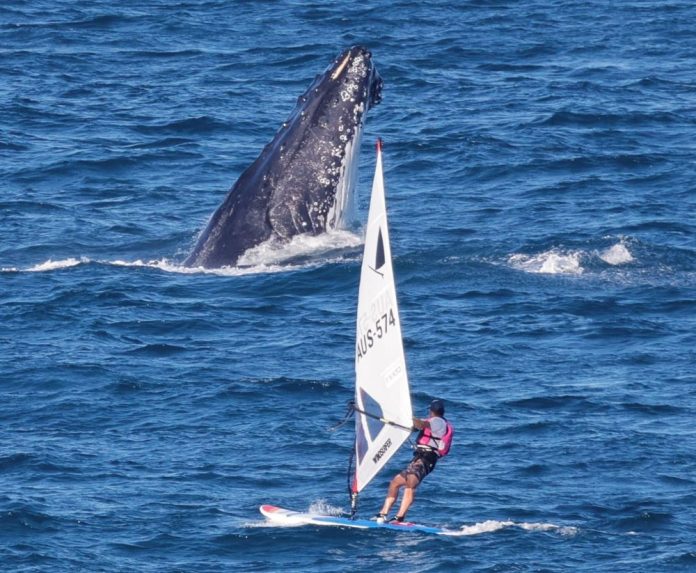It’s a whale-spotting bonanza! Scores of Sunshine Coast residents and visitors have headed to vantage points including Point Cartwright as rising numbers of the huge marine mammals begin travelling the ‘humpback highway’.
The Department of Environment and Science (DES) reports that whale numbers are increasing around 10 per cent annually, and have now almost bounced back to pre-hunting times.
One amateur Coast whale-watching group reported 58 sightings from land last Sunday alone, providing plenty of interest for photographers from Caloundra to Noosa.
“It’s not often that we come across them and to see them frolicking, with their tales splashing, in waters within eyesight of people,” Jeff Addison, an amateur photographer from Palmwoods, said.
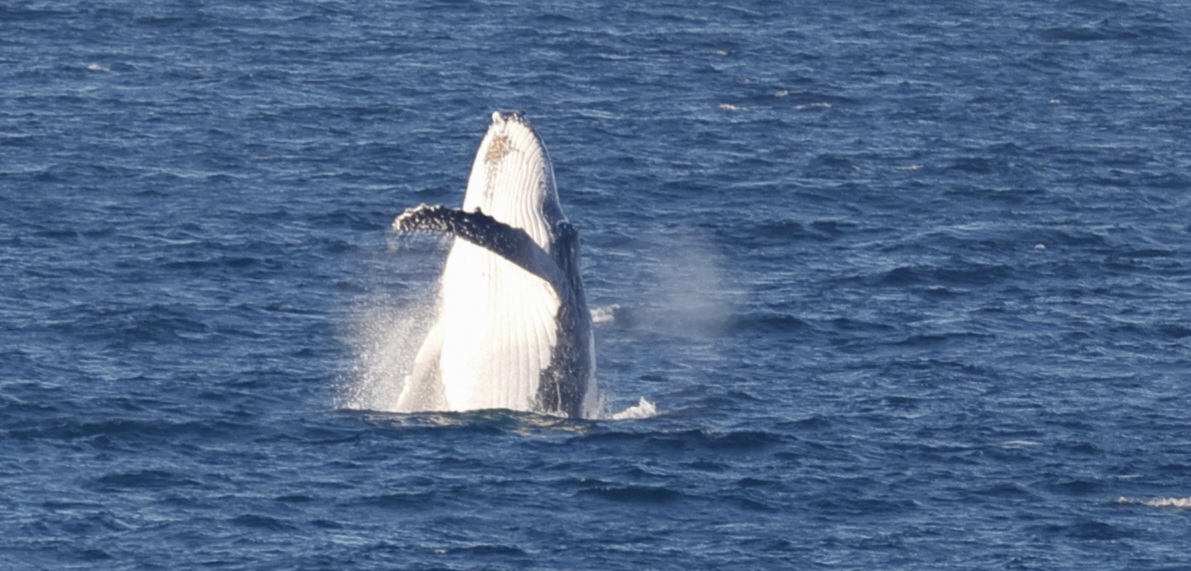
“You know, you’d see a big splash of white spray and you’d hear people say, ‘Ahhhh, wow’.”
Using an 800mm lens, Mr Addison captured a unique photo of one of the passing whales poking its head out of the water, perhaps 400m offshore and not far from a windsurfer.
“It looks to me like this whale, it’s eye hasn’t even come out of the water, but it’s almost as tall as the sail on the windsurfer,” he noted.
“I guess it’s really wonderful to know that they’re out there and their numbers are increasing, because they’re a magnificent animal.”
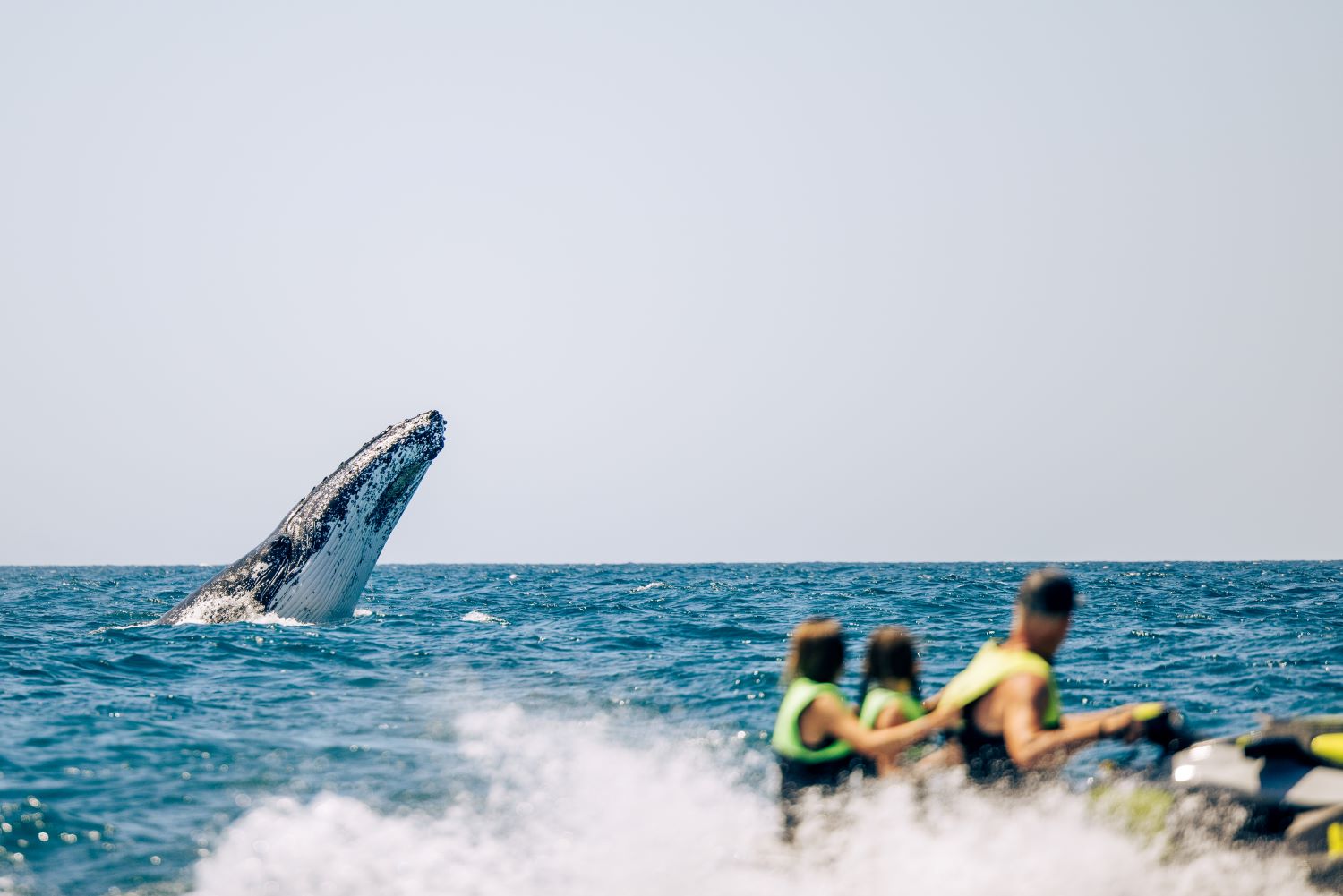
Another local, Noosa photographer Cape Tiene, was enjoying a relaxing day on the water with his children when he spotted whales off Noosa Point.
“I was amazed. They were pretty playful. They were quite happy, splashing around, and there were a lot of calves – mums and calves,” Mr Tiene said.
“They’re just lying there, waving their fins in the air, almost like they’re waving to you.”
About 40,000 humpback whales pass the Sunshine Coast each year, from late autumn and late spring, also giving birth to calves.
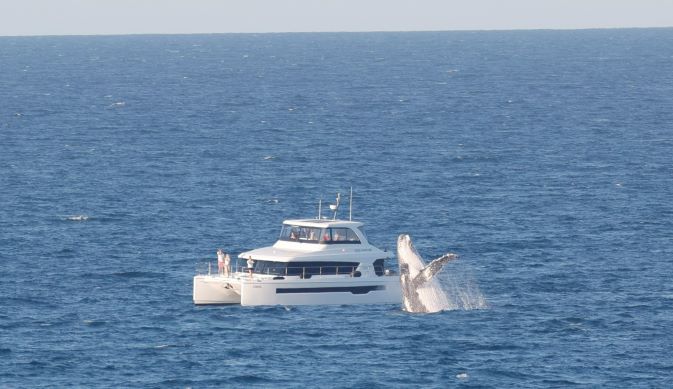
The DES stresses that with the high numbers, it’s important that boaties, jet ski-users and anglers keep back to a safe legal distance.
- Boaties and fishers must not get closer than 100 metres of a whale and 50 metres of a dolphin.
- Jet skis cannot approach within 300 metres of both whales and dolphins.
- Boat operators should also be mindful of the ‘three-boat rule’ in which a boat cannot get any closer than 300 metres to whales and 150 metres to dolphins if three boats are already present.
- A $718 fine and other penalties may apply on breaching these approach distances.
The DES said that as the whale numbers increase, we could expect to see the marine mammals more frequently during their annual migration, including near popular beaches and boat passages.
SUBSCRIBE here now for our FREE news feed, direct to your inbox daily!
Wildlife officer Carli Lovell said vessels posed a serious safety risk to the community and marine life if they ventured too close.
“Since 1 January 2022, DES has received 62 reports of marine animals with boat strike injuries, and it is safe to say there are many more injured animals in our waters that go undetected,” Ms Lovell said.
“The school holidays are the perfect time to get out on the water, experience our beautiful marine areas and see our unique aquatic wildlife, but it’s important to do so from a safe distance.”
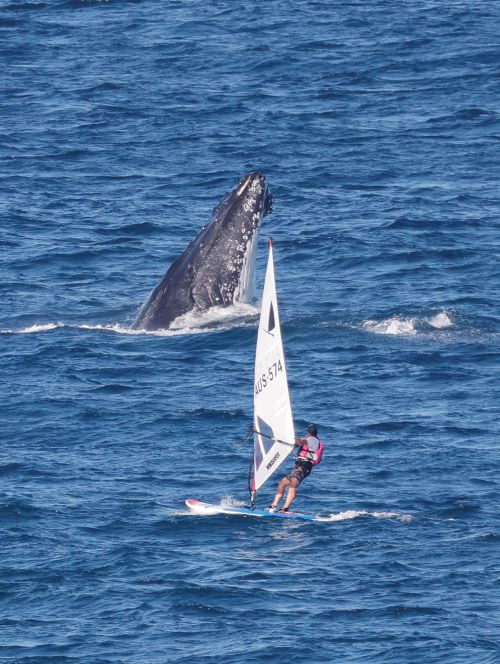
Visit Sunshine Coast said whale watching and swimming tours had elevated the Sunshine Coast’s reputation for nature-based tourism.
“One of the strongest emerging trends in travel is the demand for ‘meaningful’ travel, particularly nature-based travel, and interaction with whales is top of that list,” CEO Matt Stoeckel said.
“Most Australians are still not travelling overseas for leisure. They are opting for domestic holidays, so the demand is for really exceptional experiences.
“Whale watching is a well-established industry along the east coast of Australia, but swimming with whales has given us a major competitive edge that attracts visitors to our destination in what is traditionally a much quieter season.”
Whales are regarded as mysterious, intelligent, sometimes playful but, due to their massive size, always something to be wary off, despite their beauty.
“To me, I see the majesty of God’s creation, and I see that in everything, from the stars and the planets and the wonders and complexity of wildlife that we see,” Mr Addison said.
The Department of Environment and Science asks Sunshine Coast residents to report sick and injured marine wildlife to 1300 130 372.
Do you have a photo of a whale, or a great photo of the Sunshine Coast landscape, consider sending it to photo@sunshinecoastnews.com.au


